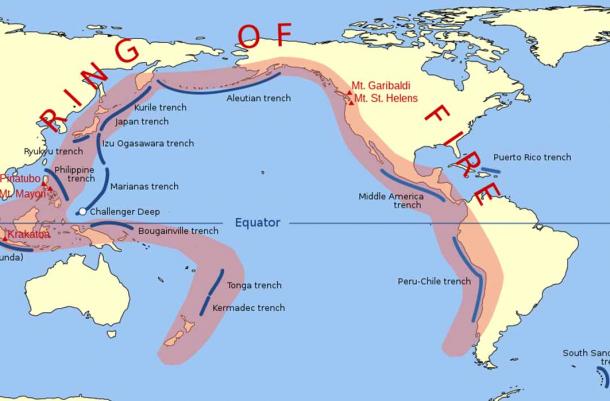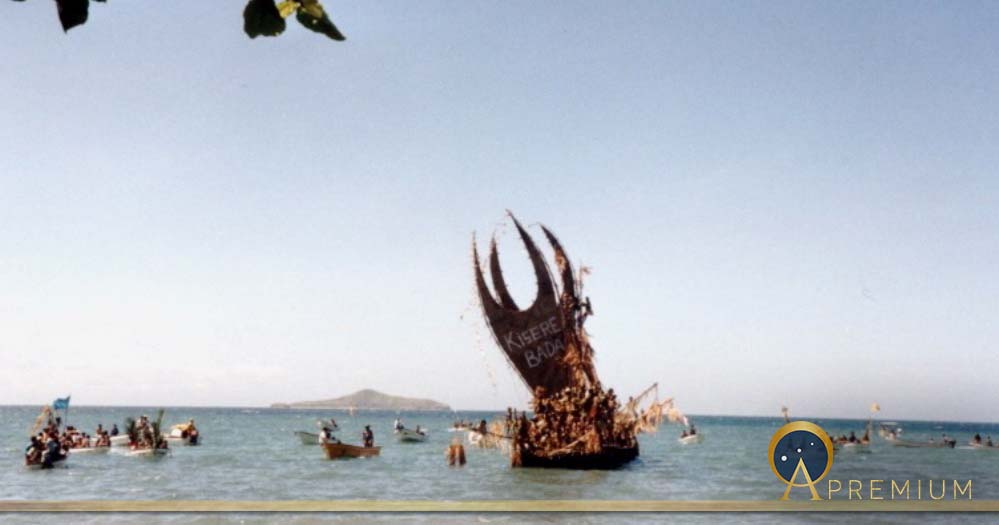Oceania’s Papua New Guinea: Forged In Volcanic Fire
The Australasian realm in the Pacific Ocean includes Australia, New Zealand, eastern Indonesia, and several Pacific island groups - including Papua New Guinea – all scattered along the Ring of Fire, bracketing the rim of the Pacific Ocean. For billions of years, the earth’s tectonic plates have moved and shifted, creating oceanic trenches, volcanic arcs, back-arc basins and volcanic belts. Two-thirds of the earth’s volcanic eruptions happened on the Pacific’s Ring of Fire, which has existed for more than 35 million years.

The Pacific Ring of Fire (Public Domain)
At a collision point of several tectonic plates within the Ring of Fire, lies the island of New Guinea. It is located on northern extension of the Indo-Australian tectonic plate and it is connected to the Australian segment by a shallow continental shelf across the Torres Strait, which formed a land bridge during ice ages. When the Indo-Australian plate moved north, it collided with the Eurasian plate, sculpturing the Himalayas, the Indonesian islands, and New Guinea's Central Range. Active volcanos, earthquakes and tsunami’s unleash extremities of Mother Nature’s elements, earth, wind, water and fire, on the island and although the island is close to the equator, it also experiences snowfall on its mountain peaks.
Crossing The Land Bridges
The ancient continent of Sahul encompassed land masses of mainland Australia, New Guinea, Tasmania and the Aru Islands. The earliest people arrived on the island of New Guinea about 60,000 years ago, when they crossed the land bridge. According to Dr Ben Shaw and his fellow researchers “ the first Sahul colonisers were remarkably dynamic, attested to by their rapid dispersal across Sahul in a relatively short time span, and not all would necessarily have arrived in Sahul by the most northern pathway.” The verdict is still not out whether they came from Out-of-Africa, Out-of-Southeast Asia, or if people immigrated from Australia outwards. This may explain why Papua New Guinea is one of the most culturally and linguistically diverse countries in the world. There are thousands of different cultural groups and over 820 indigenous languages - and four to seven percent of the population share Denisovan DNA.
But at the end of the last Ice Age (c. 115,000 – 11,700) global temperatures increased and sea levels gradually rose, flooding the land bridge. New Guinea was separated from the Australian mainland approximately 8,000 years ago, with the 151 kilometers (94 miles) wide shallow Torres Strait, named after the Spanish navigator Luís Vaz de Torres, who sailed through the strait in 1606. The island is surrounded by the Gulf of Papua, the Coral Sea, the Solomon Sea and the Bismark Sea on its south-eastern coastline.
Like this Preview and want to read on? You can! JOIN US THERE ( with easy, instant access ) and see what you’re missing!! All Premium articles are available in full, with immediate access.
For the price of a cup of coffee, you get this and all the other great benefits at Ancient Origins Premium. And - each time you support AO Premium, you support independent thought and writing.
Dr Micki Pistorius has an Honours Degree in Biblical Archaeology
Top Image: Modern day lakatoi at the Hiri Moale Festival, a modern celebration of the previous Hiri trade cycle. (Steve Jurvetson / CC BY-SA 2.0)
By: Micki Pistorius

















